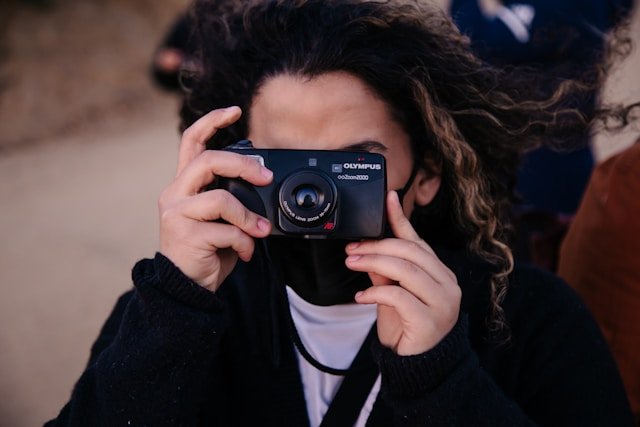Bring Your Images to Life: Exploring the Magic of Talking Photo and Face Swap Technology

Within the rapidly expanding field of artificial intelligence, few developments capture public imagination like Talking Photo and Face Swap systems. These applications animate static images or seamlessly swap faces with a realism that once belonged to science fiction. Content creators, digital artists, and casual users alike now find themselves equipped with tools that stretch the limits of visual storytelling.
What is Talking Photo Technology?
Talking Photo technology turns a frozen image into what looks like a living portrait that speaks aloud. It pairs chosen audio-whether recorded in advance or generated on the spot-with subtle mouth and eye movements that follow every syllable. Sophisticated deep-learning networks break speech into phonemes, then map those sound units to the faces expressions so the photo mimics normal speech patterns.
Picture uploading a long-shelved family snapshot and watching your great-grandfather recount his life in his own voice-or taking a cartoon character and guiding it through a silly greeting. The Talking Photo experience moves far beyond a cheap gag; it can be haunting, nostalgic, or simply humorous, yet it always keeps listeners hooked.
Applications of Talking Photo Tools
The spread of Talking Photo apps has triggered a fresh burst of creative ideas across different fields:
– Education: Instructors pair animated portraits of historical figures with lessons so students stay focused and entertained.
– Marketing: Companies animate spokespeople or mascots, giving individual shoppers a message that feels custom-made.
– Entertainment: Creators turn celebrities photos into light-hearted clips or parodies, playing with satire and commentary.
– Family Memories: Many people animate old family snapshots, sparking tears of joy or laughter as lost voices return.
Its clear that this tool straddles playful fun and serious tasks such as preserving legacies or telling rich stories.
How Does Face Swap Work?
Face Swap software relies on AI, mainly convolutional neural networks plus generative adversarial networks, to swap one persons face with another in a clip.The process is far from simple: top-tier tools measure facial shape, lighting, mood and hue, then blend the new face so it sits naturally in every frame.
With todays powerful apps, it takes only a few taps to place your face in a famous scene, test how you would look as a star, or share a light-hearted moment by swapping faces with your dog. Where early programs produced glitchy results, current Face Swap tools deliver clear, lifelike images and operate almost hands-free.
Use Cases of Face Swap Technology
Face Swap technology has spread beyond personal jokes and now serves several serious and playful purposes:
– Social Media: People post face-swapped clips to entertain followers and explore new identities.
– Film & TV: Directors apply it to replace stunt performers, refresh aging actors, or bring departed characters back onscreen.
– Gaming & VR: Custom avatars in video games and virtual worlds routinely use Face Swap features so players feel more present.
– Memes & Fun: Nearly any wild idea found online begins here, letting users brainstorm comedy almost instantly.
With the newest apps, swapping faces with a close friend, a comic book hero, or even your grandma is not only possible; it is part of everyday digital conversation.
Ethics and Considerations
Though Talking Photo and Face Swap apps seem playful, they come with serious ethical questions. At their core sit deepfake engines that anyone could bend to deceive an audience. Developers, therefore, shoulder the duty of embedding consent checks, clear labeling, and safeguards that limit harmful use. So too do users, who must pause before posting and weigh transparency against potential fallout.
In response, many platforms now watermark synthetic clips, scan uploads for abuse, and spell out do’s and don’ts. Staying abreast of these measures and thinking critically about what one shares can help curb misuse—and ensure the fun innovations remain a positive experience for creators and viewers alike.
Popular Tools for Talking Photos and Face Swaps
A growing suite of websites and mobile apps makes these effects easy to try. Most require little more than a photo and tap, and todays smartphones handle the processing ondevice, so users need no coding background or expensive gear. Some all-in-one portals fuse Talking Photo and Face Swap, letting a lifelike puppet talk with a borrowed face for amusing mash-ups.
When weighing options, look for:
High-resolution output that preserves detail
Near-instant rendering rather than long waits
Audio synced to mouth motion and mood cues
Strong privacy policies that limit data storage
Custom Voice type and expression sliders.
Tools improve with each release, and many hobbyists report that todays results surpass last months, edging closer to photorealism.
Final Thoughts
AI-driven applications such as Talking Photo and Face Swap are transforming our relationship with still images and videos. By breathing movement into archival pictures or switching faces in real time, these tools revive personal history, enable customized storytelling, and subtly merge fact with fiction. The innovation is compelling, yet prudent and ethical use must guide every creative impulse.
Whether you are crafting an emotional tribute, a shareable TikTok clip, or an animated lesson for the classroom, these applications promise to democratize artistry further.
So, feel free to animate Grandma’s black-and-white portrait, borrow a celebrity grin, and explore the playful and practical possibilities that Talking Photo and Face Swap offer.



